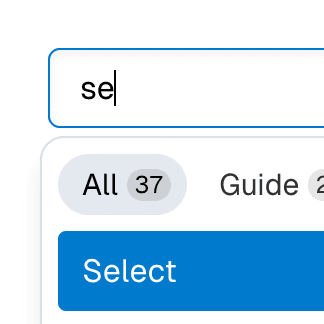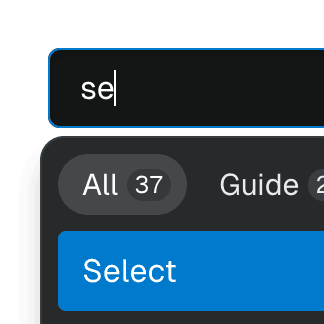ComboboxProvider
Provides a combobox store that controls the state of Combobox components.
Code examples
Optional Props
activeId
string | null | undefined
The current active item id. The active item is the element within the
composite widget that has either DOM or virtual focus (in case
virtualFocus
is enabled).
nullrepresents the base composite element (the one with a composite role). Users will be able to navigate out of it using arrow keys.If
activeIdis initially set tonull, theincludesBaseElementprop will also default totrue, which means the base composite element itself will have focus and users will be able to navigate to it using arrow keys.
Live examples
defaultActiveId
string | null | undefined = null
The composite item id that should be active by default when the composite
widget is rendered. If null, the composite element itself will have focus
and users will be able to navigate to it using arrow keys. If undefined,
the first enabled item will be focused.
defaultItems
T[] | undefined = []
The defaut value for the
items state.
defaultOpen
boolean | undefined = false
Whether the content should be visible by default.
defaultSelectedValue
MutableValue<T> | undefined = ""
The initial value of the
selectedValue
state. This can be a string or an array of strings. If it's an array, the
combobox is considered
multi-selectable.
defaultValue
string | undefined = ""
The initial value of the combobox input.
disclosure
DisclosureStore | null | undefined
A reference to another disclosure store that controls another disclosure
component to keep them in sync. Element states like contentElement and
disclosureElement won't be synced. For that, use the
store prop
instead.
Live examples


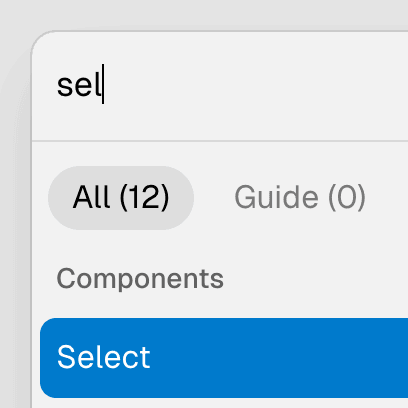
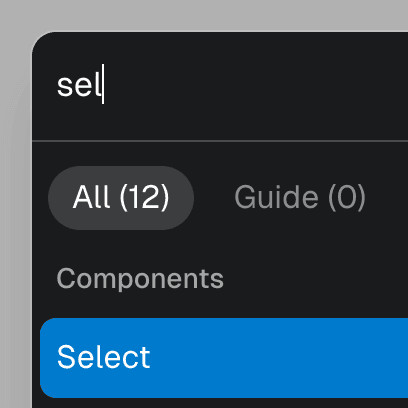
focusLoop
boolean | Orientation = true
Determines how the focus behaves when the user reaches the end of the composite widget.
On one-dimensional composite widgets:
trueloops from the last item to the first item and vice-versa.horizontalloops only iforientationishorizontalor not set.verticalloops only iforientationisverticalor not set.If
includesBaseElementis set totrue(oractiveIdis initially set tonull), the composite element will be focused in between the last and first items.
On two-dimensional composite widgets (when using
CompositeRow or explicitly
passing a rowId
prop to composite items):
trueloops from the last row/column item to the first item in the same row/column and vice-versa. If it's the last item in the last row, it moves to the first item in the first row and vice-versa.horizontalloops only from the last row item to the first item in the same row.verticalloops only from the last column item to the first item in the column row.If
includesBaseElementis set totrue(oractiveIdis initially set tonull), vertical loop will have no effect as moving down from the last row or up from the first row will focus on the composite element.If
focusWrapmatches the value offocusLoop, it'll wrap between the last item in the last row or column and the first item in the first row or column and vice-versa.
Live examples




focusShift
boolean = false
Works only on two-dimensional composite widgets.
If enabled, moving up or down when there's no next item or when the next item is disabled will shift to the item right before it.
Live examples
focusWrap
boolean | Orientation = true
Works only on two-dimensional composite widgets.
If enabled, moving to the next item from the last one in a row or column will focus on the first item in the next row or column and vice-versa.
truewraps between rows and columns.horizontalwraps only between rows.verticalwraps only between columns.If
focusLoopmatches the value offocusWrap, it'll wrap between the last item in the last row or column and the first item in the first row or column and vice-versa.
Live examples
id
string
The ID of the composite store is used to reference elements within the composite widget before hydration. If not provided, a random ID will be generated.
includesBaseElement
boolean = true
Indicates if the composite base element (the one with a composite role) should be part of the focus order when navigating with arrow keys. In other words, moving to the previous element when the first item is in focus will focus on the composite element itself. The same applies to the last item when moving to the next element.
Live examples




items
T[]
Lists all items along with their metadata. This state is automatically
updated when an item is registered or unregistered using the
registerItem
function.
Live examples
open
boolean = false
Whether the content is visible.
Live examples
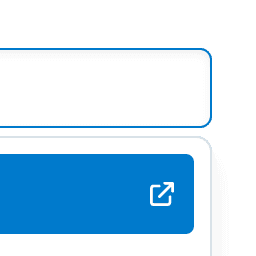
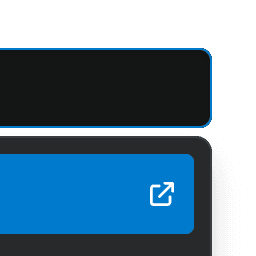
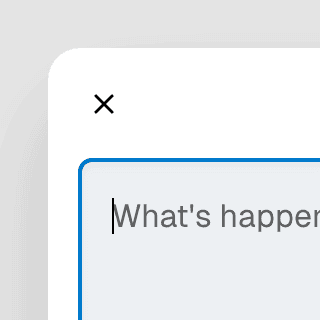
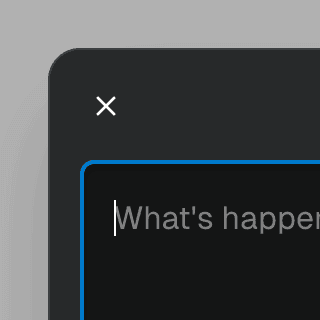
orientation
Orientation = "vertical"
Defines the orientation of the composite widget. If the composite has a
single row or column (one-dimensional), the orientation value determines
which arrow keys can be used to move focus:
both: all arrow keys work.horizontal: only left and right arrow keys work.vertical: only up and down arrow keys work.
It doesn't have any effect on two-dimensional composites.
placement
Placement = "bottom"
The placement of the popover.
Live examples


popover
PopoverStore | null | undefined
A reference to another popover store that's controlling another popover to keep them in sync.
resetValueOnHide
boolean
Whether to reset the value when the combobox popover closes. This prop is
automatically set to true by default if the combobox supports multiple
selections. In other words, if the
selectedValue
or
defaultSelectedValue
props are arrays.
Live examples






rtl
boolean = false
Determines how the
next and
previous
functions will behave. If rtl is set to true, they will be inverted.
This only affects the composite widget behavior. You still need to set
dir="rtl" on HTML/CSS.
selectedValue
MutableValue<T>
The value(s) of the currently selected item(s). This can be a string or an array of strings. If it's an array, the combobox is considered multi-selectable.
Live examples
setActiveId
((activeId: string | null | undefined) => void) | undefined
A callback that gets called when the
activeId
state changes.
setItems
BivariantCallback<(items: T[]) => void> | undefined
A callback that gets called when the
items state
changes.
Code examples
const [items, setItems] = useState([]);
setMounted
((mounted: boolean) => void) | undefined
A callback that gets called when the mounted state changes.
Code examples
const [mounted, setMounted] = useState(false);
setOpen
((open: boolean) => void) | undefined
A callback that gets called when the
open state
changes.
Code examples
const [open, setOpen] = useState(false);
setSelectedValue
((value: MutableValue<T>) => void) | undefined
A callback that's invoked when the
selectedValue
state changes, typically when the user selects an item. This can be used to
implement behavior like onSelect or onItemSelect.
Live examples
setValue
((value: string) => void) | undefined
A callback that gets called when the
value state
changes.
Live examples

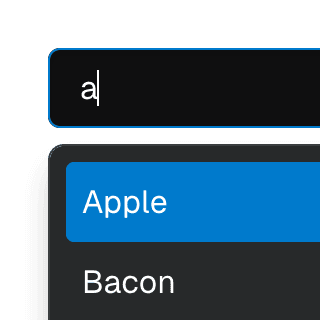

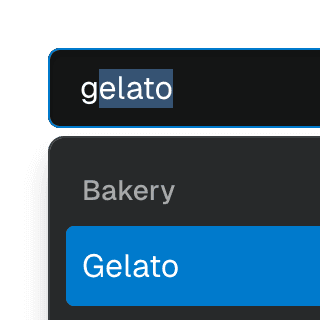




store
Store<Partial<S>> | undefined
Another store object that will be kept in sync with the original store.
Live examples
tag
TagStore | null | undefined
A reference to a tag store. It's automatically set when rendering a combobox within a tag list.
value
string
The combobox input value.
Live examples




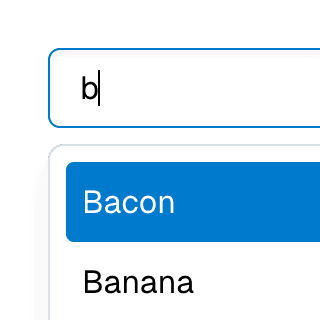




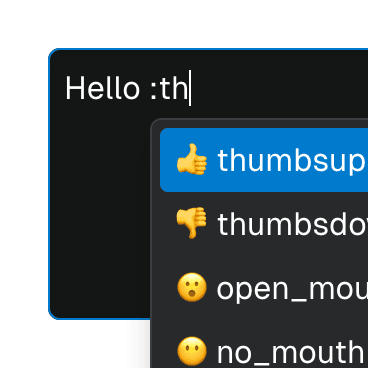


virtualFocus
boolean = true
If enabled, the composite element will act as an
aria-activedescendant
In both scenarios, the item in focus will carry the
data-active-item
attribute.
Live examples
animated
animatednumber | boolean | undefined
Deprecated: Manually setting the animated prop is no longer necessary.
This will be removed in a future release.
Determines whether the content should animate when it is shown or hidden.
If
true, theanimatingstate will betruewhen the content is shown or hidden and it will wait for a CSS animation/transition to end before becomingfalse.If it's set to a number, the
animatingstate will betruewhen the content is shown or hidden and it will wait for the number of milliseconds to pass before becomingfalse.
resetValueOnSelect
resetValueOnSelectboolean
Deprecated: Use the
resetValueOnSelect
prop on ComboboxItem
instead.
Whether to reset the value when an item is selected. This prop is
automatically set to true by default if the combobox supports multiple
selections. In other words, if the
selectedValue
or
defaultSelectedValue
props are arrays.
